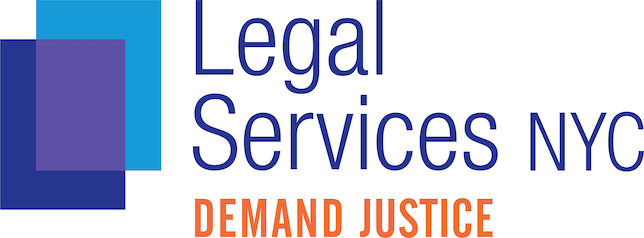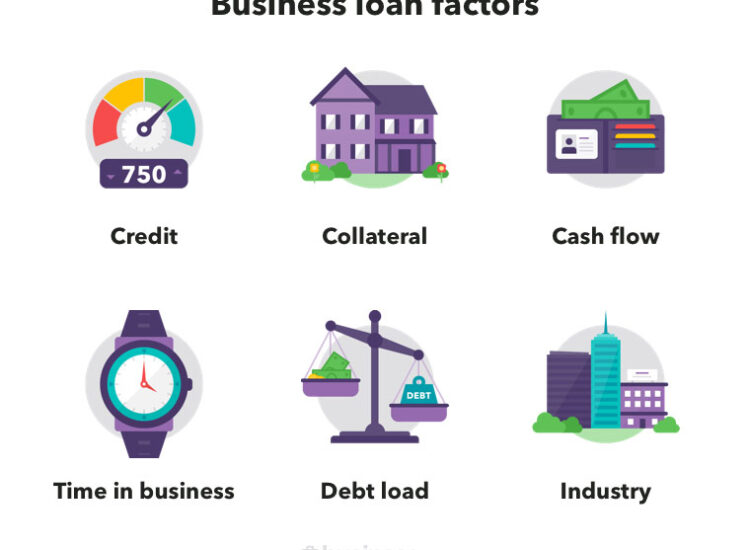Navigating the financial landscape as a small business owner can often feel overwhelming, especially when unexpected expenses arise. For instance, a small bakery owner grappling with sudden repair costs may find themselves exploring various loan options, including those offered by Lending Club. While the speed of the application process may appear appealing, concerns regarding interest rates and potential hidden fees warrant a thorough investigation. This article delves into Lending Club business loan reviews to provide insights that can assist similar businesses in evaluating their financing choices.
Toc
- 1. Understanding Lending Club’s Business Loan Landscape
- 2. Comprehensive Lending Club Business Loan Reviews: What You Need to Know
- 3. Eligibility Criteria and Application Process
- 4. Analyzing Customer Feedback: Lending Club Business Loan Reviews
- 5. Comparing Lending Club to Competitors
- 6. Related articles 02:
- 7. Pros and Cons of Lending Club Business Loans: A Balanced Perspective
- 8. Tips for Success with a Lending Club Business Loan Application
- 9. Conclusion: Navigating Your Business Financing Journey
- 10. Related articles 01:
In recent years, the financial landscape has seen an increase in the use of fintech solutions for small business lending. A report from the Federal Reserve indicates a significant rise in online lending platforms, driven by factors such as faster processing times and broader access to credit. As more small businesses turn to these digital platforms, understanding the nuances of options like Lending Club becomes crucial.
Lending Club has emerged as a prominent player in the small business lending arena, offering a range of loan products tailored to diverse needs. However, reviews present a mixed bag of experiences, highlighting both positive and negative aspects related to interest rates, fees, and customer service. This analysis of Lending Club business loan reviews aims to illuminate these varied perspectives, empowering small business owners to make informed financing decisions.
Understanding Lending Club’s Business Loan Landscape

Since its inception in 2007, Lending Club has evolved from a pioneering peer-to-peer lending platform to a comprehensive digital financial solutions provider. The company has successfully navigated complex financial terrain, positioning itself as a significant alternative to traditional banking institutions for small business owners seeking flexible financing options.
The Evolution of Lending Club’s Business Model
Key milestones in Lending Club’s journey include:
- 2007: Founded as a peer-to-peer lending platform, Lending Club connected borrowers directly with individual investors.
- 2014: Became the first P2P lender to go public, marking a significant step in its growth.
- 2020: Acquired Radius Bank, expanding its offerings beyond personal and business loans to include banking services such as savings accounts and investment opportunities.
- 2024: Continued focus on digital-first lending solutions, positioning itself as a competitive player in the online lending landscape.
This evolution has allowed Lending Club to cater to a diverse range of borrowers, including individuals and small business owners, creating an ecosystem that addresses various financial needs.
Comprehensive Lending Club Business Loan Reviews: What You Need to Know
Types of Business Loans Offered
Lending Club provides multiple business loan products designed to meet diverse financial needs. Understanding these options can help business owners choose the right fit for their situation:
- Term Loans
- Loan Amount: Ranges from $5,000 to $250,000.
- Interest Rates: Start as low as 8.49%, depending on the borrower’s creditworthiness.
- Repayment Terms: Typically range from 1 to 5 years.
- Ideal for: Major business investments, equipment purchases, or expansion efforts.
Term loans provide a fixed amount of capital that businesses repay over a set period, making them suitable for larger projects requiring substantial upfront funding.
- Business Lines of Credit
- Flexible Borrowing Options: A line of credit operates similarly to a credit card, allowing business owners to withdraw funds as needed.
- Interest Rates: Charged only on the amount utilized, providing cost-effective access to capital.
- Best for: Managing cash flow fluctuations, unexpected expenses, or seasonal needs.
This flexibility makes lines of credit a popular choice for businesses that experience varying financial demands throughout the year.
- SBA Loan Partnerships
- Government-Backed Loan Options: Although not a primary focus, Lending Club offers loans backed by the Small Business Administration (SBA).
- Potentially Lower Interest Rates: These loans often come with more favorable terms and conditions, making them an attractive option for eligible borrowers looking for long-term financing solutions.
SBA loans can be particularly beneficial for startups or businesses with limited credit history, as they reduce the lender’s risk.
Features of Lending Club Business Loans
To further assist small business owners in making informed decisions, here are the key features of each loan type:
| Feature | Term Loans | Lines of Credit | SBA Loans |
|---|---|---|---|
| Loan Amounts | $5,000 – $250,000 | Up to $100,000 | $5,000 – $5 million |
| Interest Rates | Starting at 8.49% | Varies based on usage | Typically lower than traditional loans |
| Repayment Terms | 1 – 5 years | Revolving credit | 10 – 25 years |
| Eligibility | 600+ credit score | 600+ credit score | 640+ credit score |
This variety of loan products allows small business owners to select financing options that align with their specific needs and financial circumstances.
Eligibility Criteria and Application Process
Qualifying for a Lending Club Business Loan
Lending Club’s eligibility requirements are relatively flexible compared to traditional banks. To qualify for a business loan, applicants must meet the following criteria:
- Time in Business: Businesses must have been operational for at least 12 months. This requirement helps ensure that borrowers have a track record of financial stability.
- Annual Revenue: A minimum of $50,000 in annual revenue is typically required to demonstrate the business’s ability to repay the loan.
- Credit Score: Applicants need a personal credit score of at least 600. However, higher credit scores can help secure better interest rates and loan terms.
- Ownership Percentage: Borrowers must own at least 20% of the business. This requirement ensures that the applicant has a significant stake in the company’s success.
Application Steps
Applying for a business loan through Lending Club is designed to be straightforward and efficient. Here’s a step-by-step breakdown of the application process:
- Online Application: The process begins with completing an online application, which can typically be done in just a few minutes. Applicants will need to provide basic business and personal information, including financial details and business ownership.
- Document Submission: After submitting the application, borrowers may need to provide additional documentation to verify their income, ownership, and business operations. This may include tax returns, bank statements, or profit and loss statements.
- Credit Check: Lending Club will conduct a soft credit inquiry to assess the applicant’s creditworthiness. Unlike a hard inquiry, a soft credit check does not impact the borrower’s credit score.
- Approval Timeline: Most applicants can expect a decision within a few hours of submitting their application. If approved, the funds are typically deposited into the borrower’s bank account within a few business days.
- Loan Terms and Conditions: Once approved, borrowers will receive a detailed breakdown of the loan terms, including interest rates, repayment schedules, and any applicable fees. It’s crucial to review these terms carefully before accepting the loan.
Tips for a Successful Application
To enhance the likelihood of approval, small business owners should consider the following tips:
- Strengthen Your Credit Profile: Before applying, check your credit report for inaccuracies and work on improving your credit score by paying off outstanding debts and making timely payments.
- Prepare a Comprehensive Financial Profile: Having a clear and detailed understanding of your business’s financial situation can help build credibility with lenders. This includes preparing income statements, cash flow projections, and an overview of your business model.
- Be Transparent About Your Needs: Clearly articulate why you need the funds and how you plan to use them. This information can instill confidence in lenders regarding your intentions and ability to repay the loan.
- Consider Alternative Options: If Lending Club’s terms do not meet your needs, explore other funding avenues such as community banks, credit unions, or local grants that may offer more favorable terms.
Analyzing Customer Feedback: Lending Club Business Loan Reviews
Positive Aspects of Lending Club Reviews
Lending Club has garnered a mix of reviews across various platforms, including Yelp, Reddit, and the Better Business Bureau (BBB). Numerous enthusiastic reviews highlight Lending Club’s:
- Quick Funding: Many customers rave about the rapid processing times for loans. This efficiency proves invaluable for businesses confronting urgent financial needs, enabling them to address operational challenges without lengthy delays.
- User-Friendly Application: Borrowers consistently laud the platform’s straightforward and accessible online application process. The intuitive interface facilitates a smooth experience, particularly for those who may not be tech-savvy.
- Responsive Customer Support: Positive experiences with customer service representatives are frequently mentioned. Many customers express satisfaction with the assistance received during the application process, which can be crucial for those unfamiliar with the lending landscape.
Negative Aspects of Lending Club Reviews
While positive feedback is prevalent, some customers have shared negative experiences, often pointing to issues such as:
- High Interest Rates: Concerns about relatively high-interest rates compared to traditional bank loans have been expressed, particularly for borrowers with lower credit scores. Interest rates are influenced by various factors, including the borrower’s credit score, the loan amount, and prevailing market interest rates. While Lending Club’s rates may be higher than those of some traditional banks for certain borrowers, they can remain competitive compared to other online lenders or for businesses with less-than-perfect credit.
- Hidden Fees: A number of reviews mention unexpected fees that were not clearly communicated during the application process. This concern has attracted regulatory scrutiny in the past, leading to increased attention on Lending Club’s practices.
- Communication Issues: A segment of borrowers reported difficulties in reaching customer support or receiving timely updates on their application status. Effective communication is essential in the lending process, and any delays can cause frustration for borrowers.
Addressing the Lending Club Scandal
In 2016, Lending Club faced a scandal that led to significant regulatory scrutiny and internal reforms within the company. Allegations of improper practices regarding the disclosure of loan details to investors raised concerns about transparency and accountability. In response, Lending Club implemented measures to enhance transparency, including improved loan origination processes and enhanced investor disclosures. Despite these reforms, the impact on its reputation remains a topic of discussion among potential borrowers. Many small business owners may wonder how this scandal affects Lending Club’s overall trustworthiness and reliability as a lending partner.
Comparing Lending Club to Competitors
When considering business financing, it’s essential to compare Lending Club with other lenders in the market. Here’s a brief overview of how Lending Club stacks up against some competitors:
| Feature | Lending Club | Competitor A | Competitor B |
|---|---|---|---|
| Loan Amounts | $5,000 – $250,000 | $10,000 – $500,000 | $2,000 – $200,000 |
| Interest Rates | Starting at 8.49% | Starting at 7.95% | Starting at 9.99% |
| Repayment Terms | 1 – 5 years | 2 – 7 years | 1 – 5 years |
| Eligibility Criteria | 600+ credit score | 640+ credit score | 580+ credit score |
Lending Club’s offerings are competitive, especially for small businesses seeking quick access to funding. However, potential borrowers should evaluate their options and consider factors like interest rates, repayment terms, and overall customer service when making a decision.
Pros and Cons of Lending Club Business Loans: A Balanced Perspective
To provide a clearer picture of Lending Club’s offerings, here are some pros and cons to consider:
Pros:
- Fast Approval and Funding: The streamlined application process often results in quick approvals and disbursements, which can be critical for businesses facing immediate financial needs.
- Variety of Loan Products: With options like term loans and lines of credit, borrowers can choose the product that best suits their financial situation.
- Flexible Eligibility Criteria: Compared to traditional banks, Lending Club’s eligibility requirements are more accessible, allowing more small business owners to qualify for funding.
Cons:
- Higher Interest Rates: Borrowers with lower credit scores may face higher interest rates, making loans more expensive over time.
- Potential for Hidden Fees: Some borrowers have reported unexpected fees, which can add to the overall cost of borrowing.
- Customer Service Challenges: While many reviews are positive, some customers have experienced communication issues that could hinder the borrowing process.
Tips for Success with a Lending Club Business Loan Application
If you’re a small business owner contemplating a Lending Club loan, here are some practical steps to enhance your chances of approval and ensure a positive borrowing experience:
- Strengthen Your Credit Score: Before applying, check your credit report for inaccuracies and work on improving your credit score by paying off outstanding debts and making timely payments.
- Prepare a Detailed Financial Profile: Having a clear picture of your business’s finances, including income statements and cash flow projections, can strengthen your application. A well-prepared financial profile demonstrates to lenders that you have a solid understanding of your business’s financial health.
- Be Transparent About Your Needs: Clearly articulate why you need the funds and how you plan to use them. This can instill confidence in lenders about your intentions and help them understand your business goals.
- Consider Alternative Funding: If Lending Club’s terms do not meet your needs, explore other financing options such as community banks, credit unions, or local grants that may offer more favorable terms.
- Read the Fine Print: Ensure you thoroughly understand the loan terms, including interest rates, fees, and repayment schedules. Being informed can prevent any unpleasant surprises down the line.
- Seek Professional Advice: If you’re uncertain about the borrowing process or need assistance in preparing your application, consider consulting with a financial advisor or a business consultant. They can provide valuable insights and guidance tailored to your specific situation.
Conclusion: Navigating Your Business Financing Journey
Lending Club offers a viable option for small business owners seeking quick and accessible financing. While the lender has garnered a range of reviews, both positive and negative, understanding the specifics of its loan offerings, eligibility criteria, and application process can empower entrepreneurs to make informed decisions. Ultimately, weighing the pros and cons, alongside exploring other funding avenues, will ensure that business owners secure the best financial solution for their needs.
As the financial landscape continues to evolve, small business owners must remain vigilant in exploring their options and staying informed about lending practices. By doing so, they can navigate the complexities of securing funding and ultimately position their businesses for success.
Lending Club business loan reviews offer a comprehensive overview of the lending experience, shedding light on customer satisfaction, loan performance, and the overall reputation of the lender. By examining these reviews and considering the insights provided, small business owners can make educated decisions about their financing options and choose the right lending partner for their unique needs.









